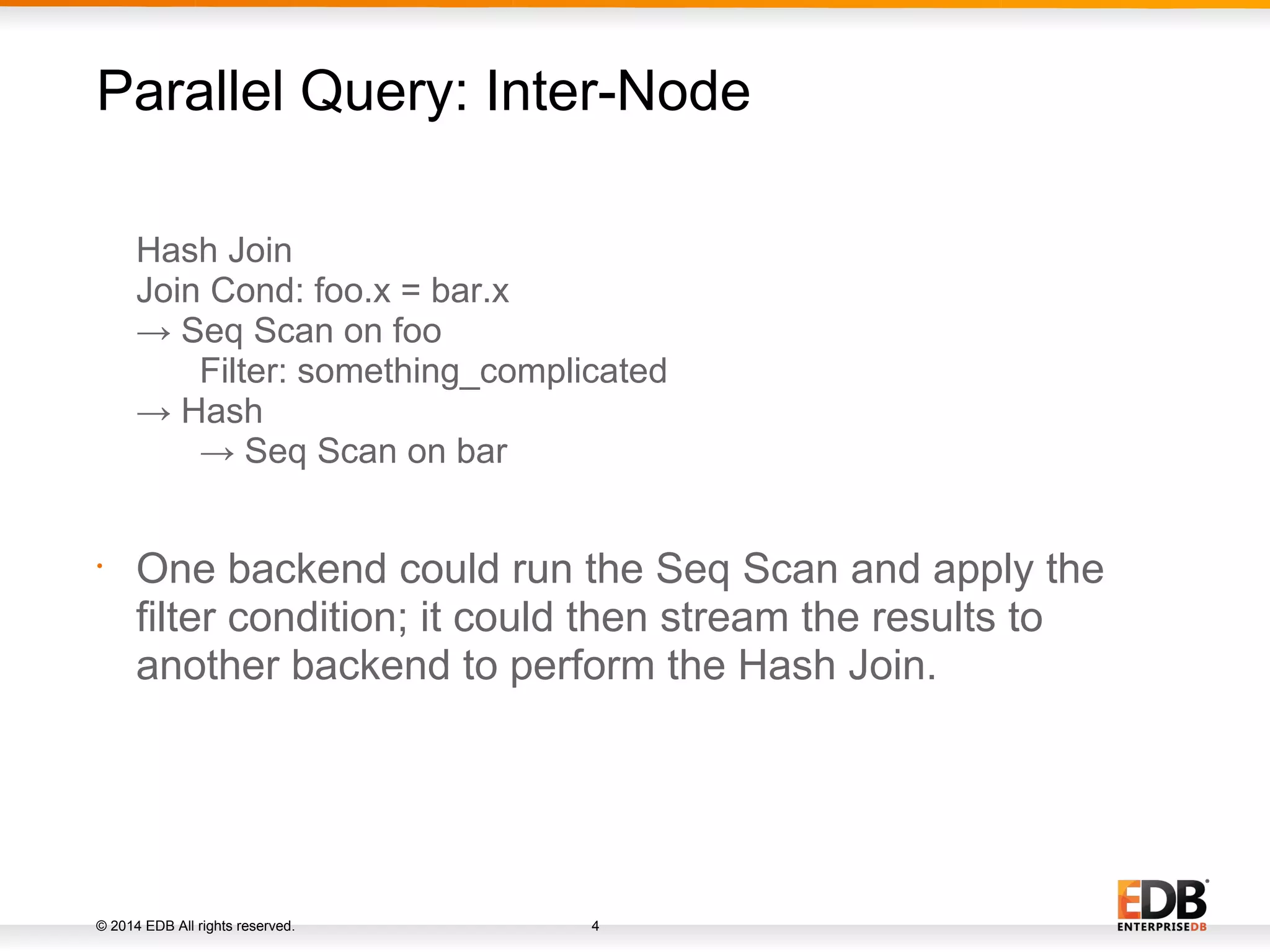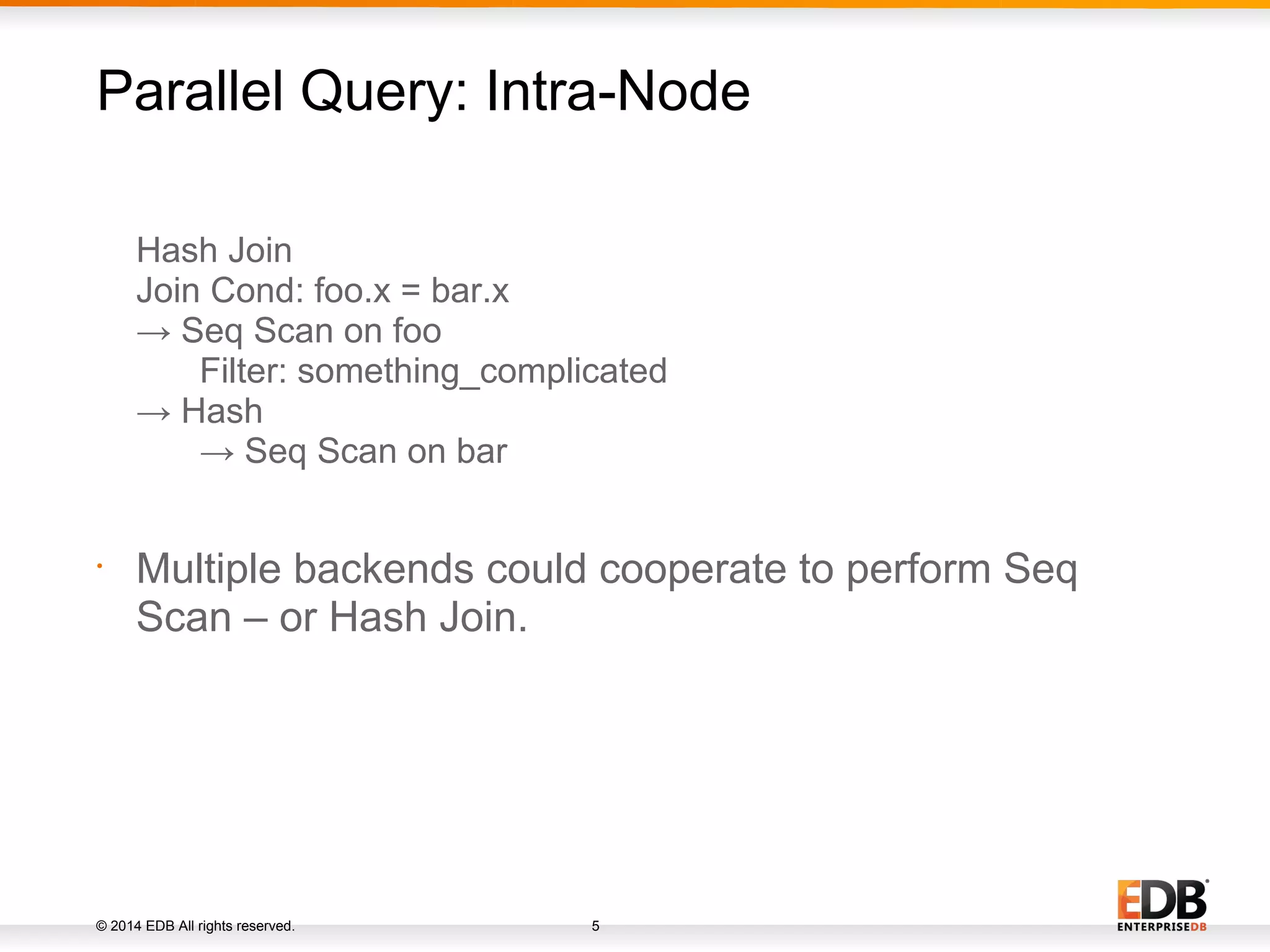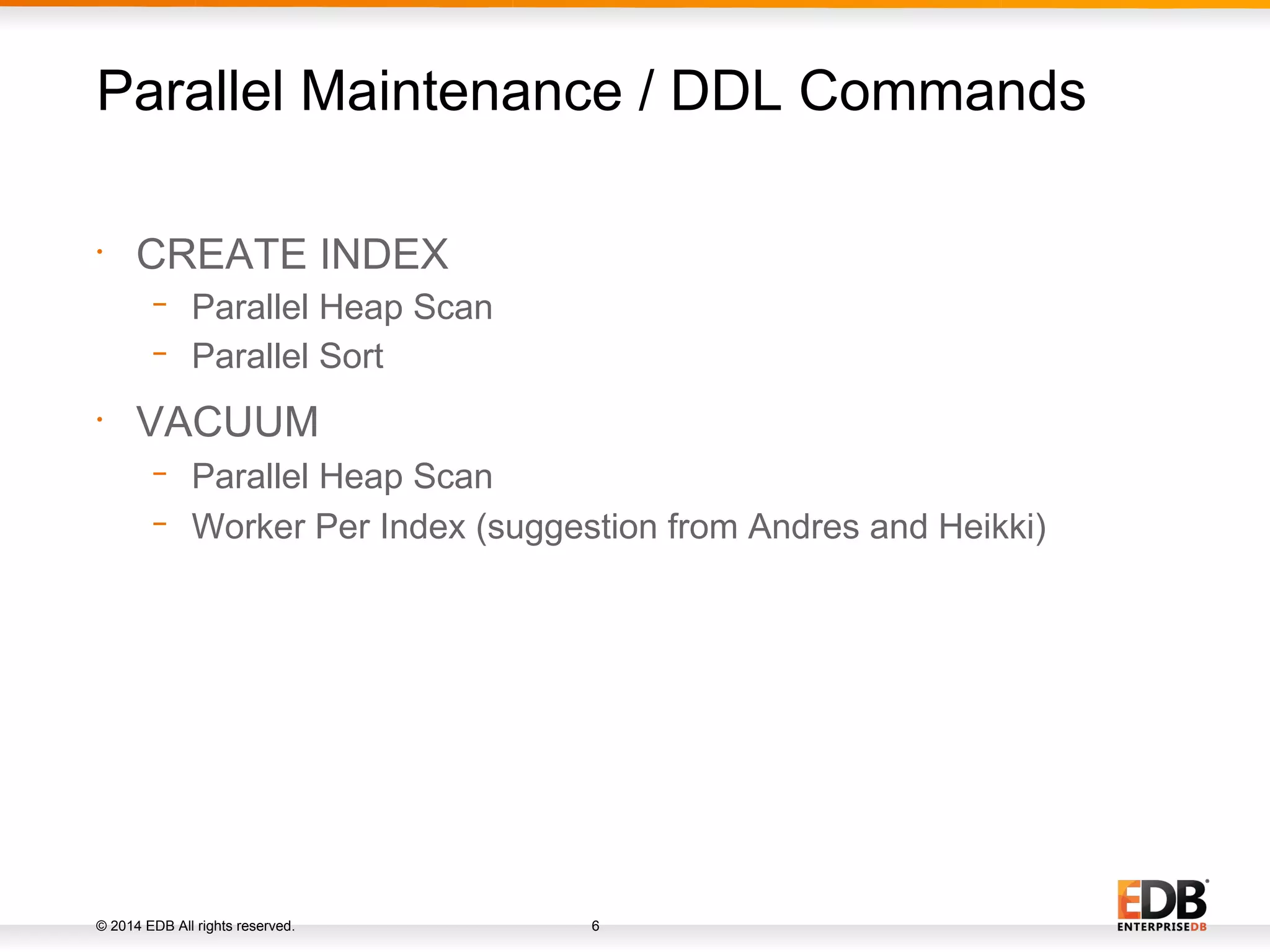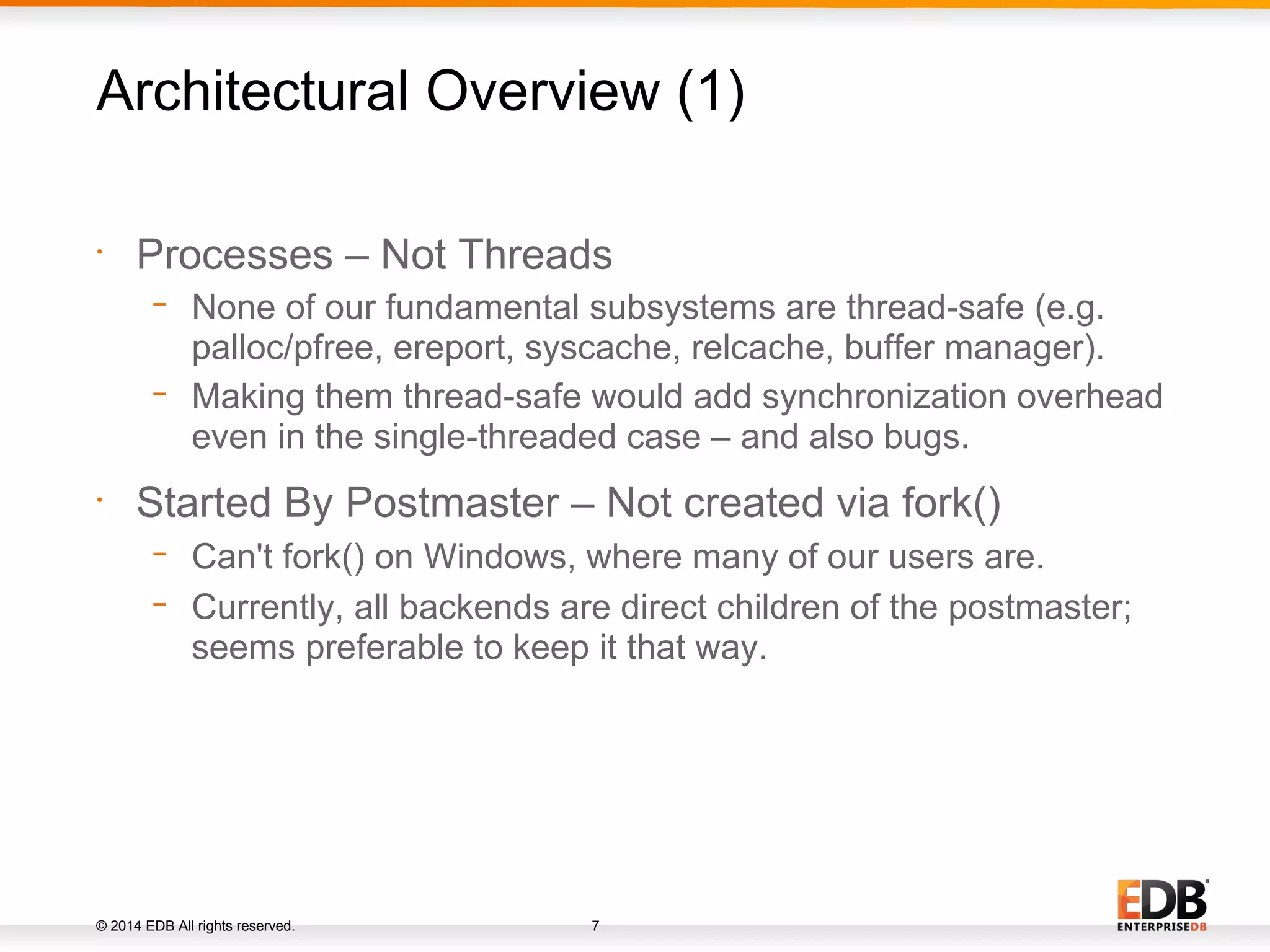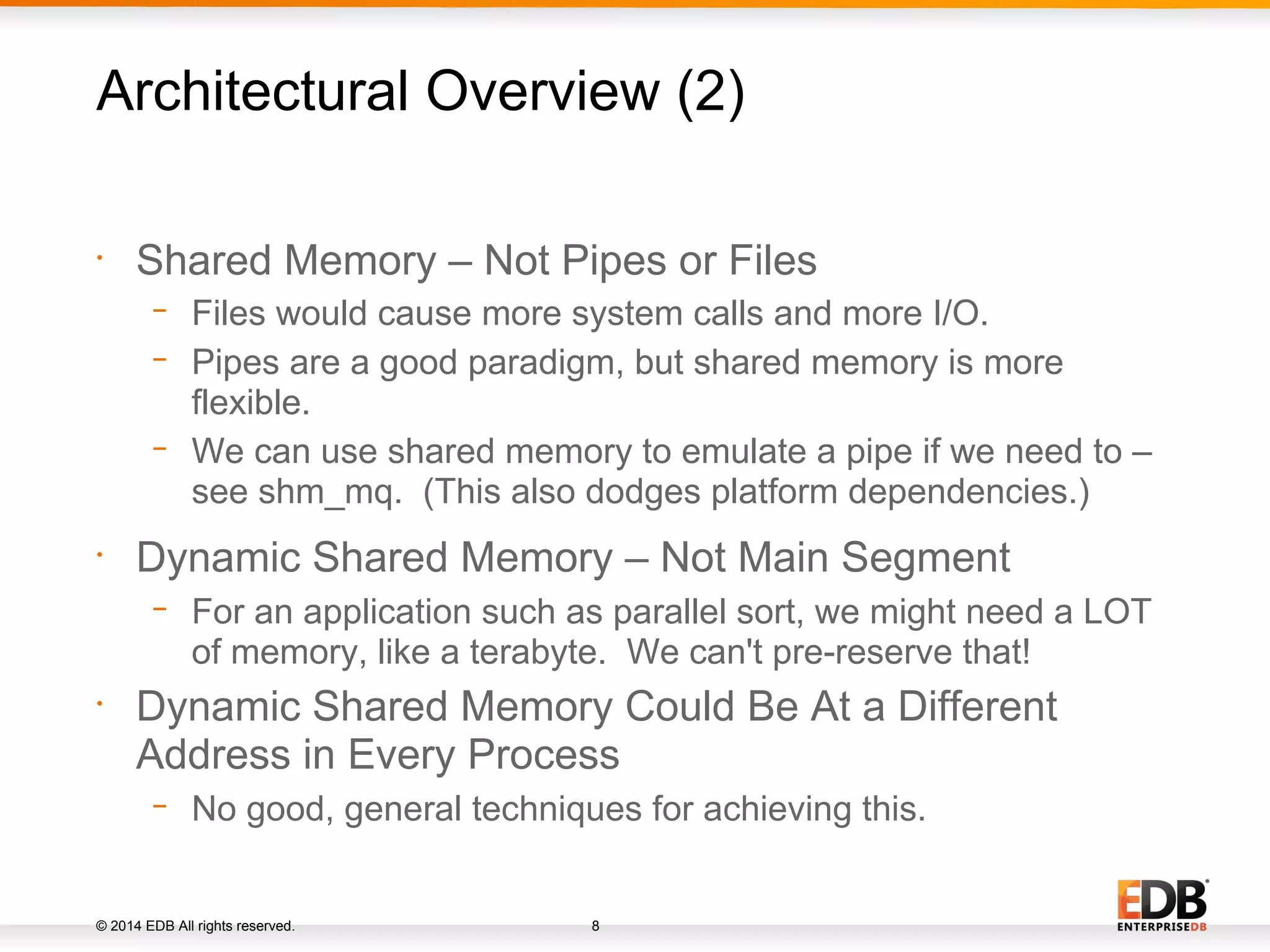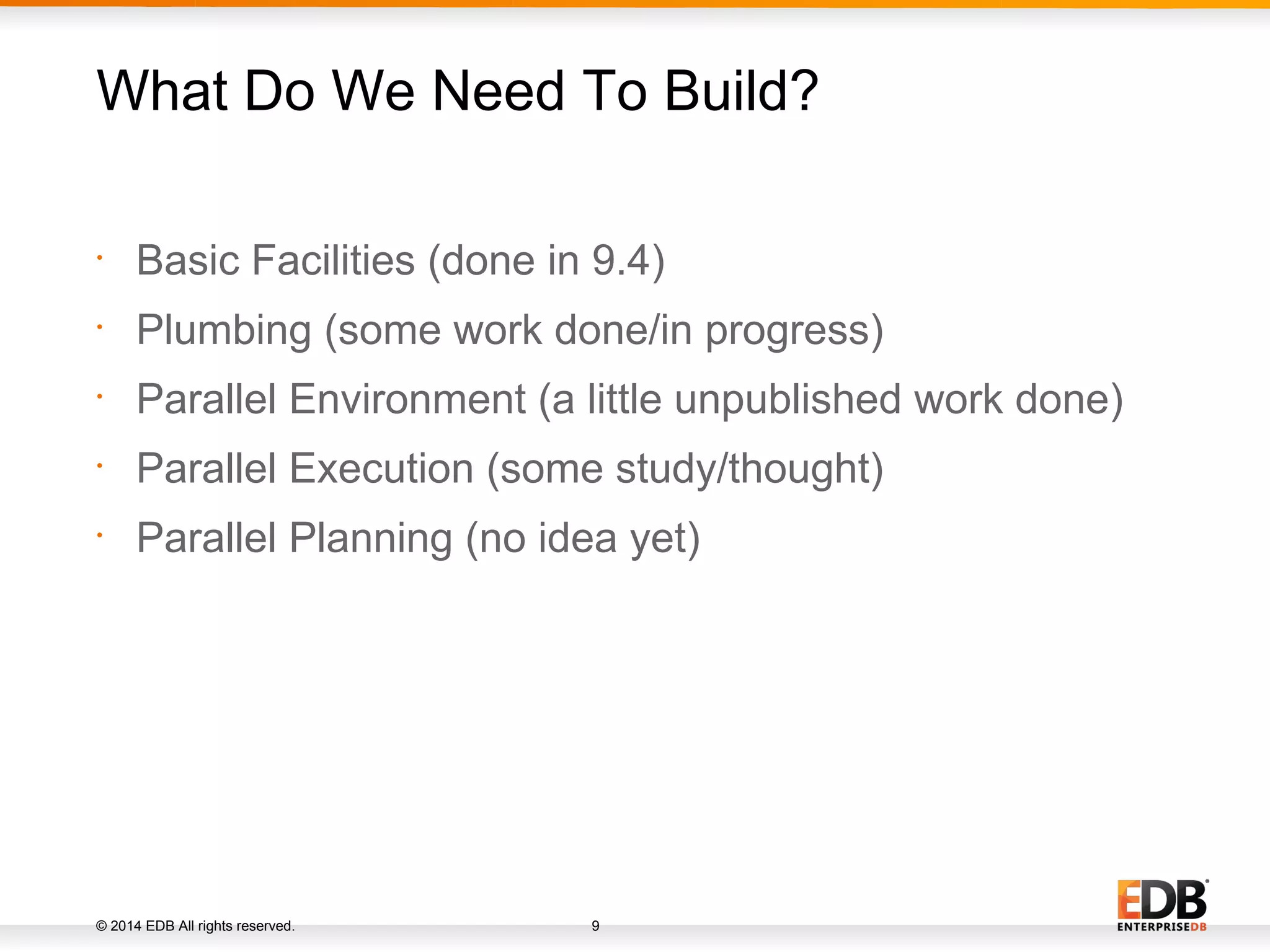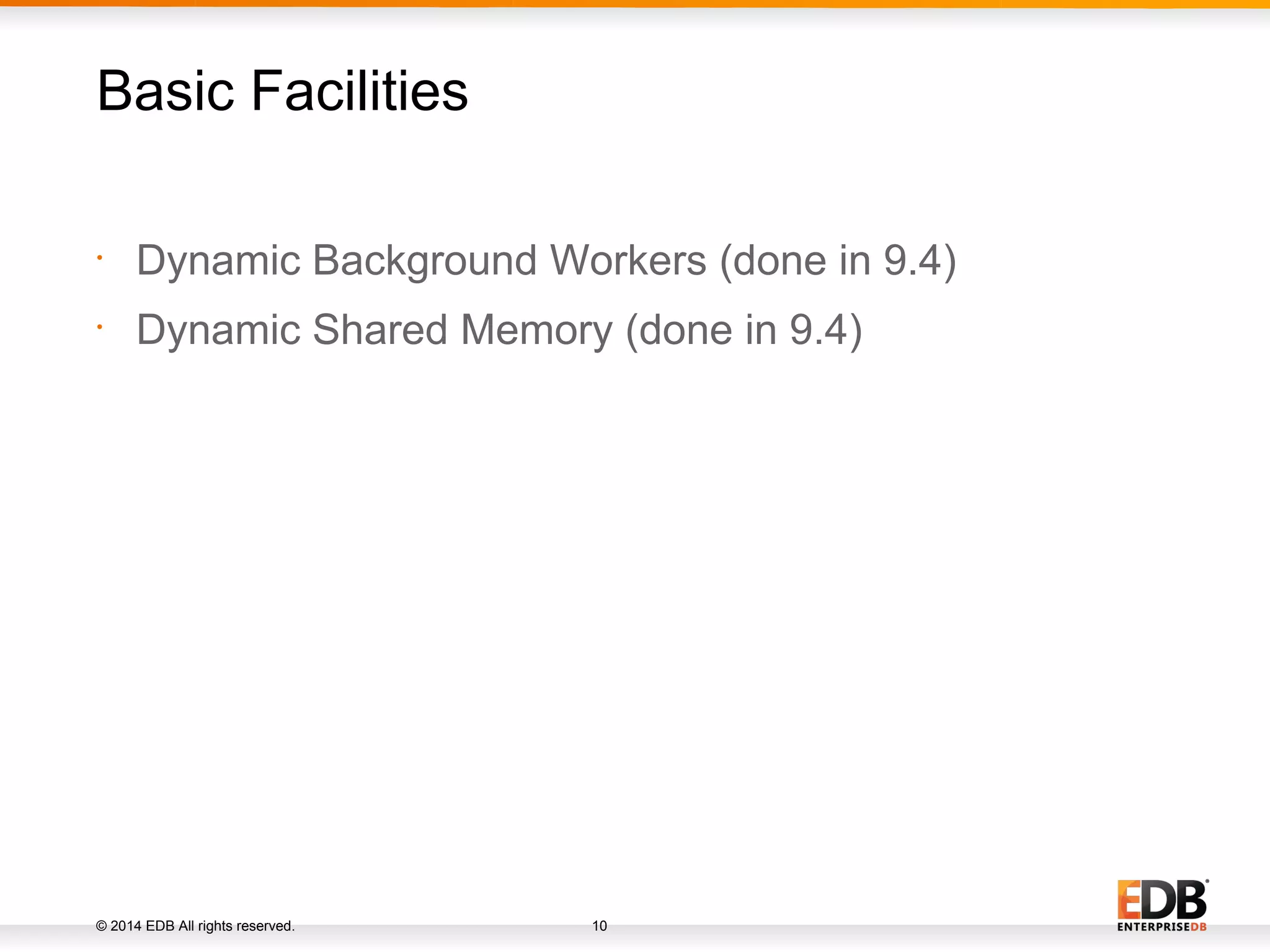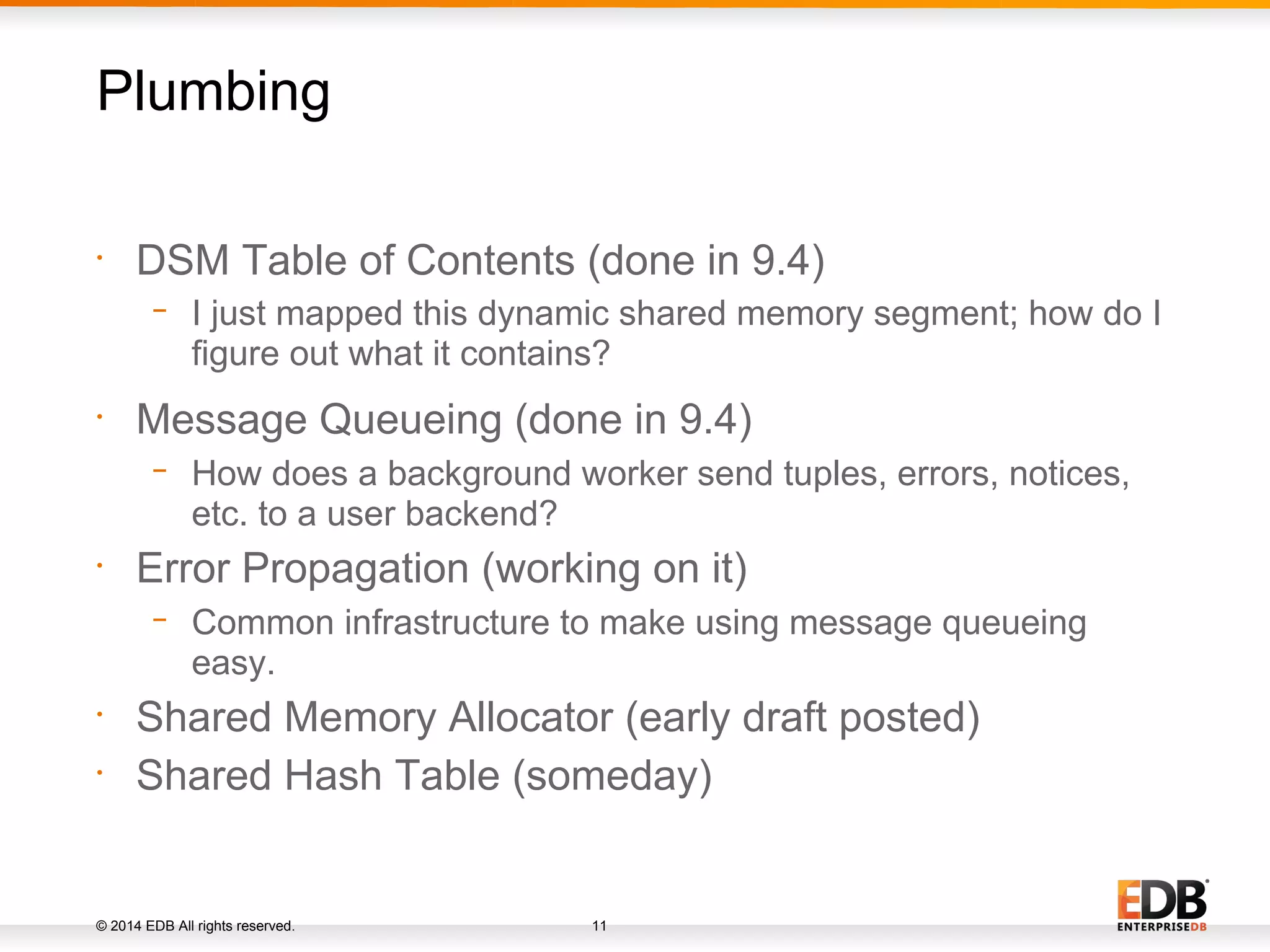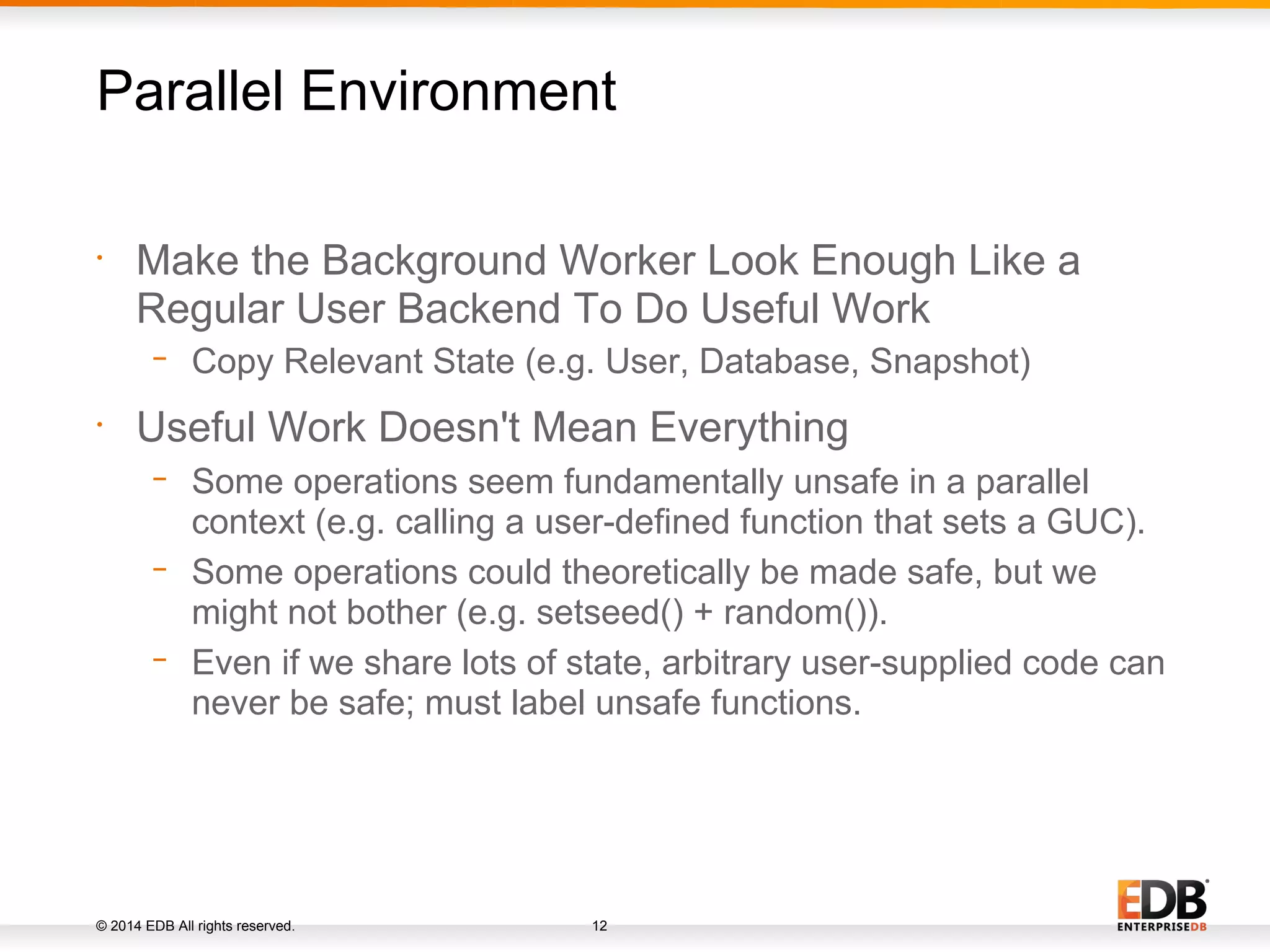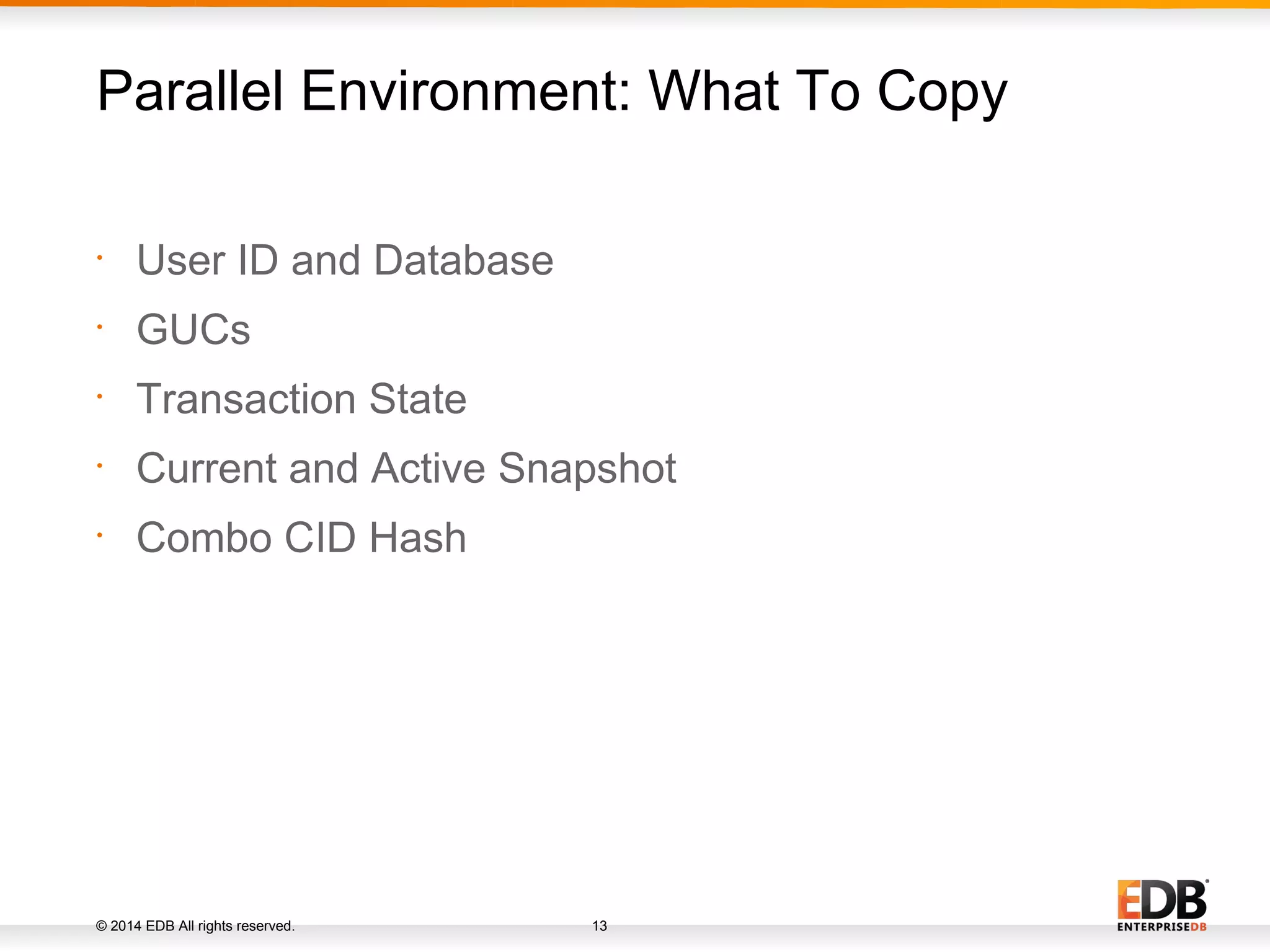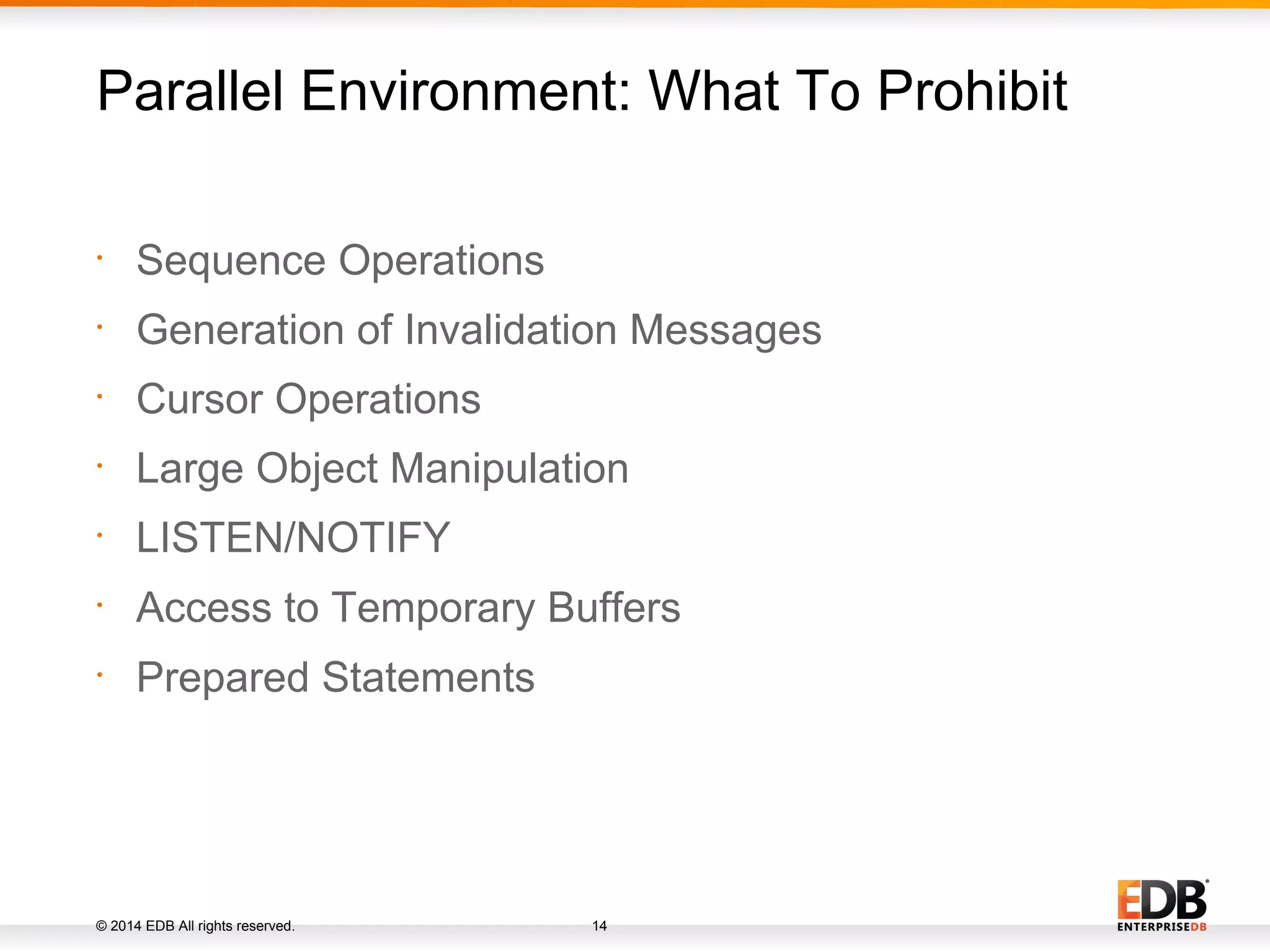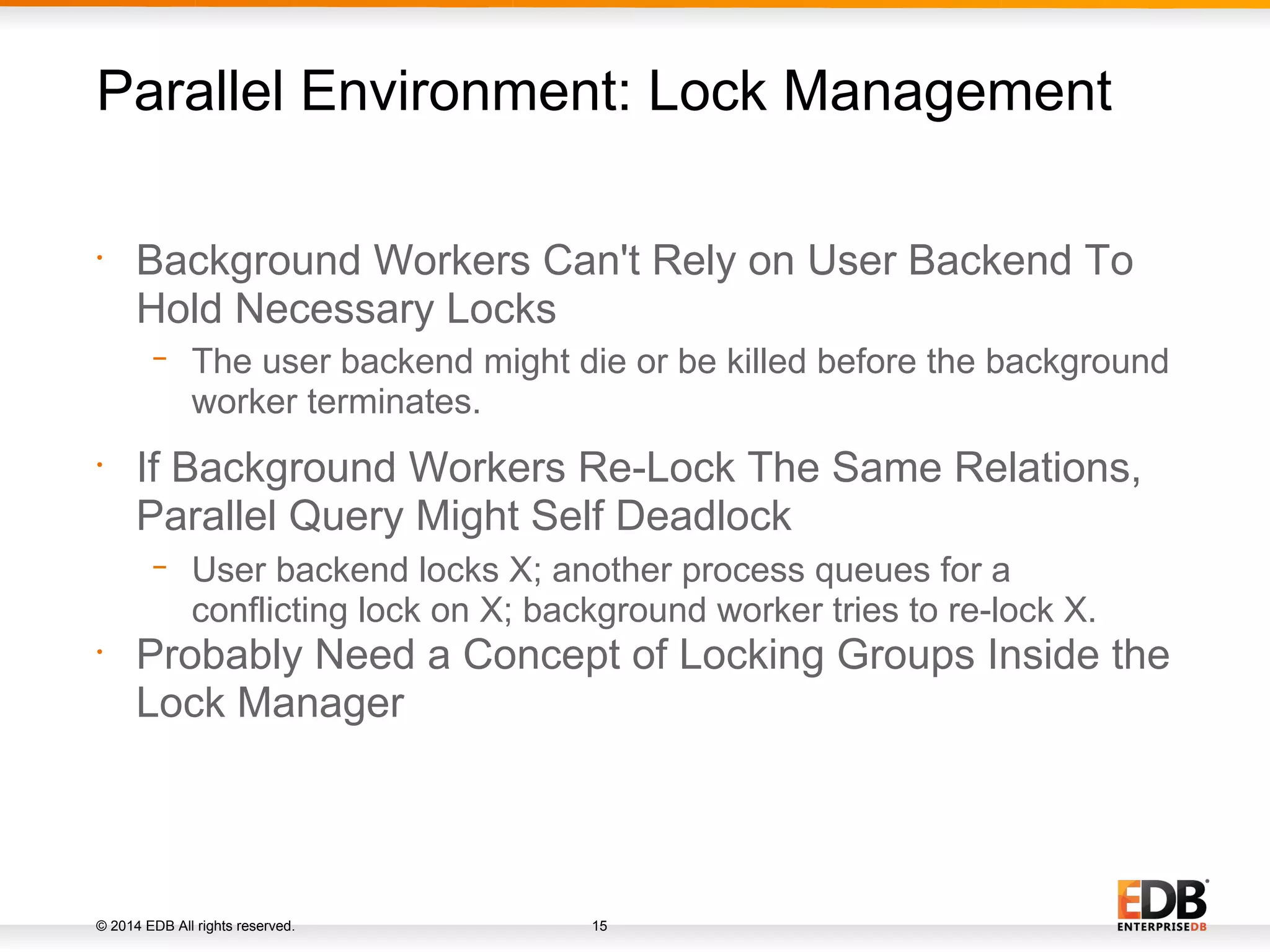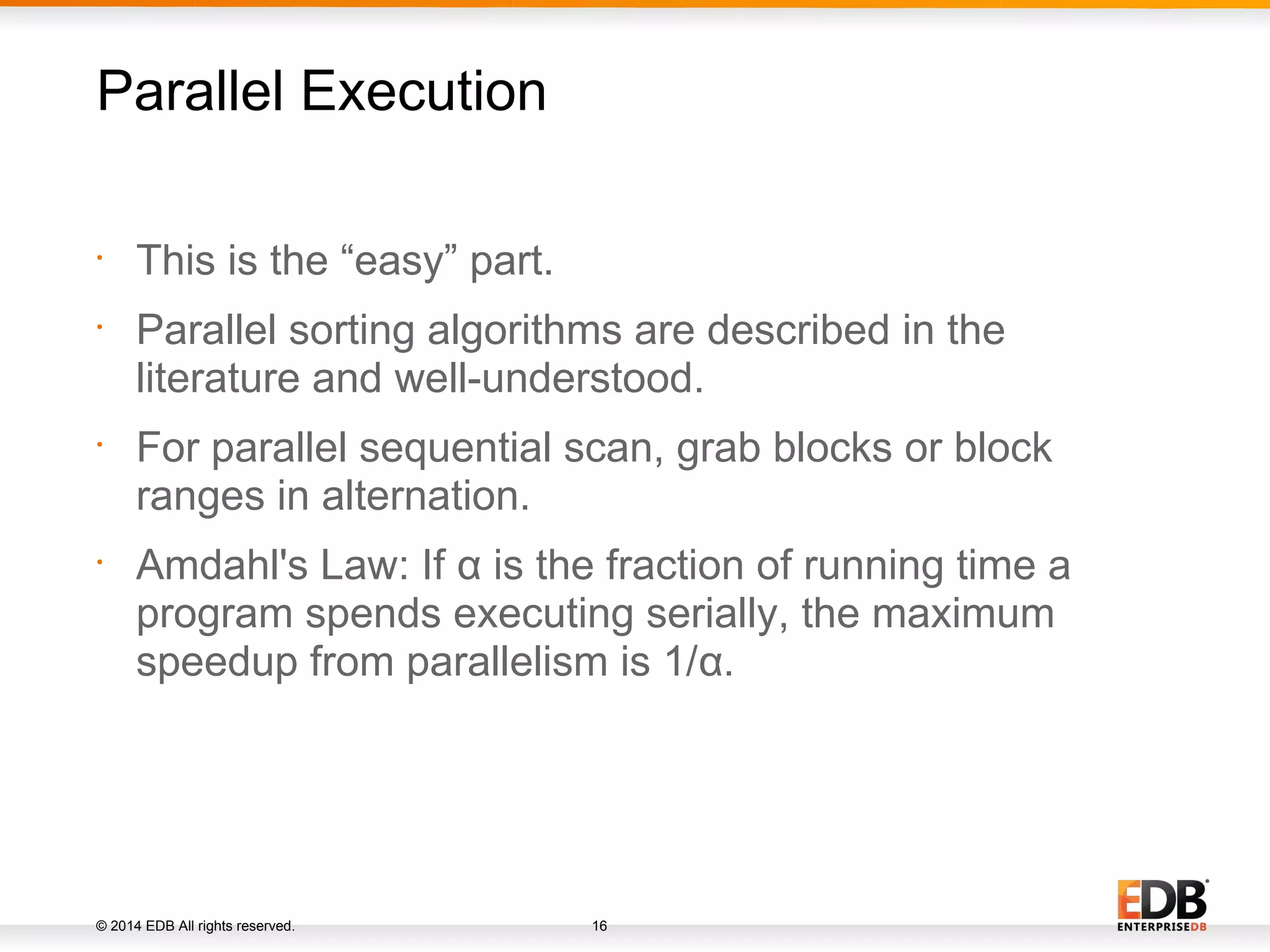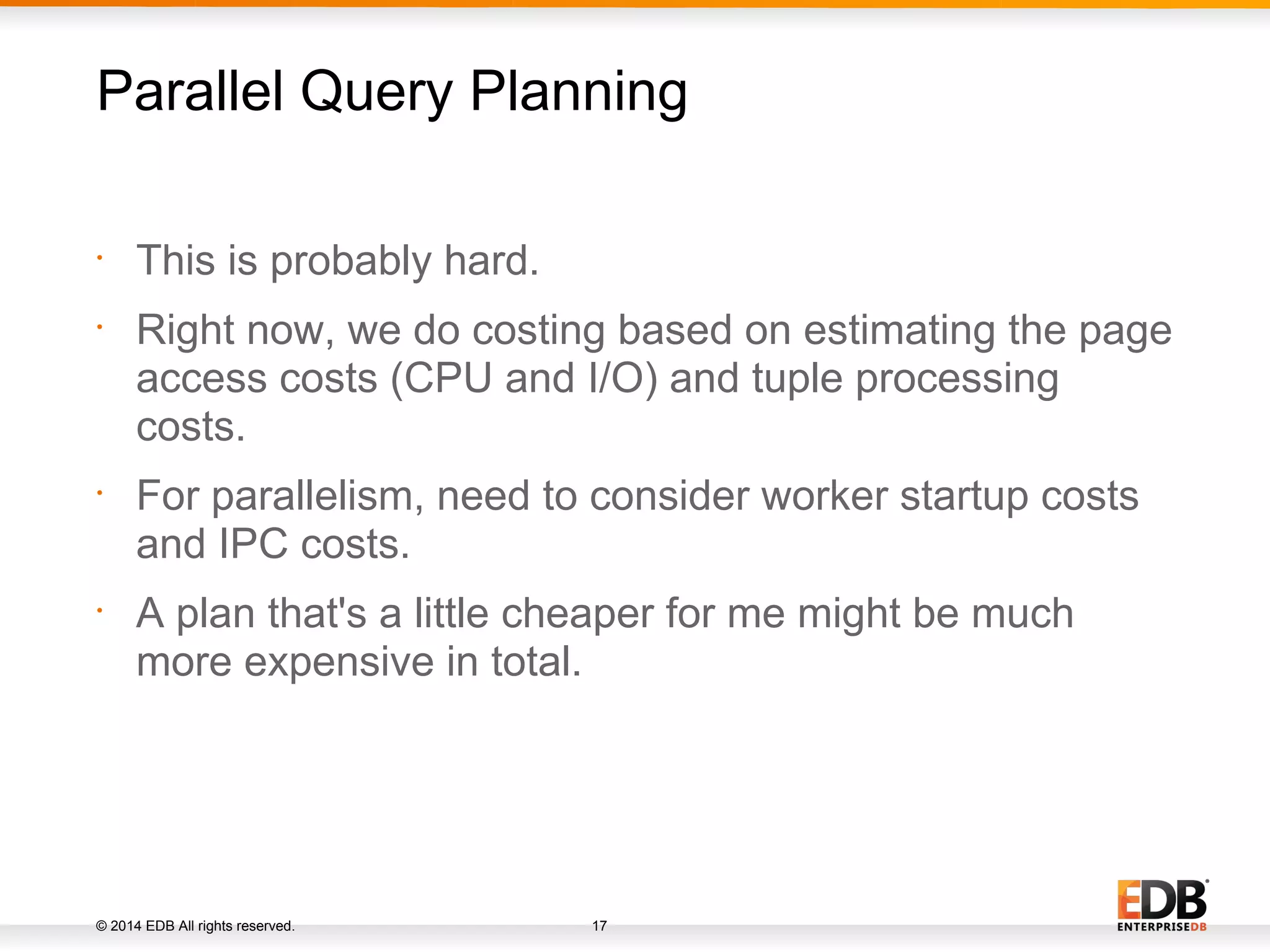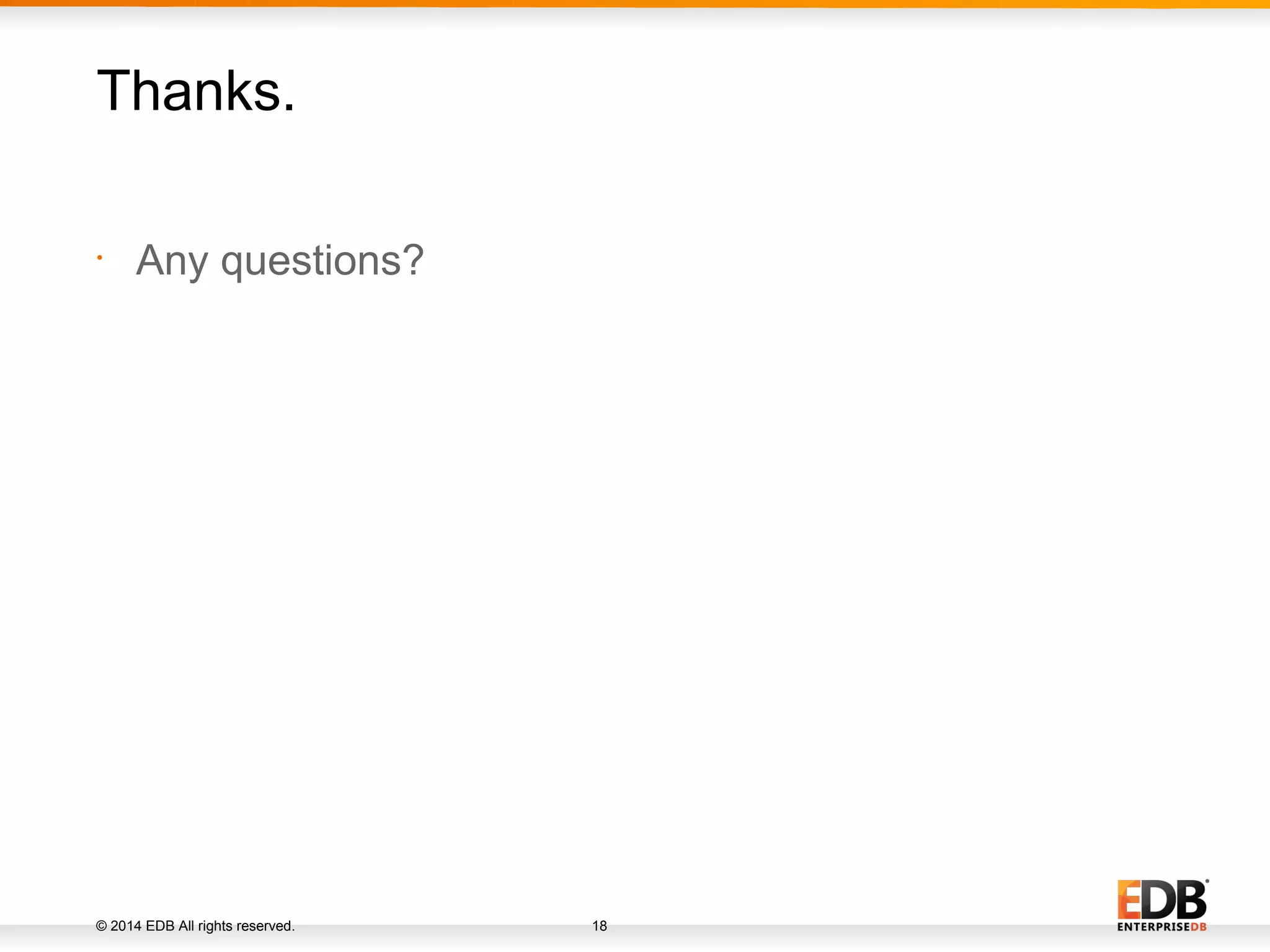The document discusses the implementation of parallelism in PostgreSQL, highlighting advancements in single-threaded CPU performance and proposing enhanced query processing techniques through multiple backends. It outlines the architectural considerations, including the need for shared memory, dynamic background workers, and the management of locks to prevent deadlocks. The presentation emphasizes the challenges and methodologies for achieving effective parallel execution and planning within PostgreSQL.
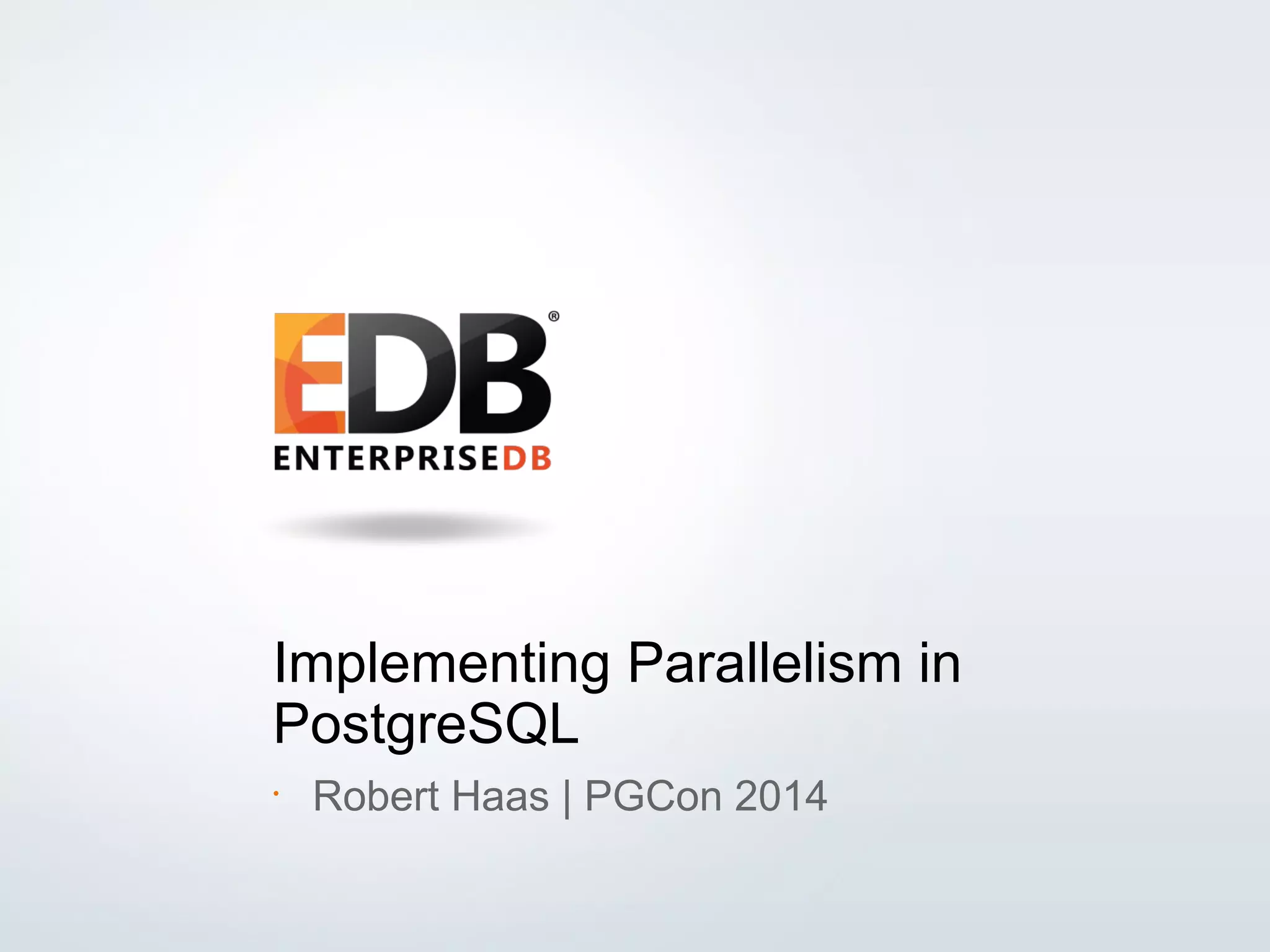
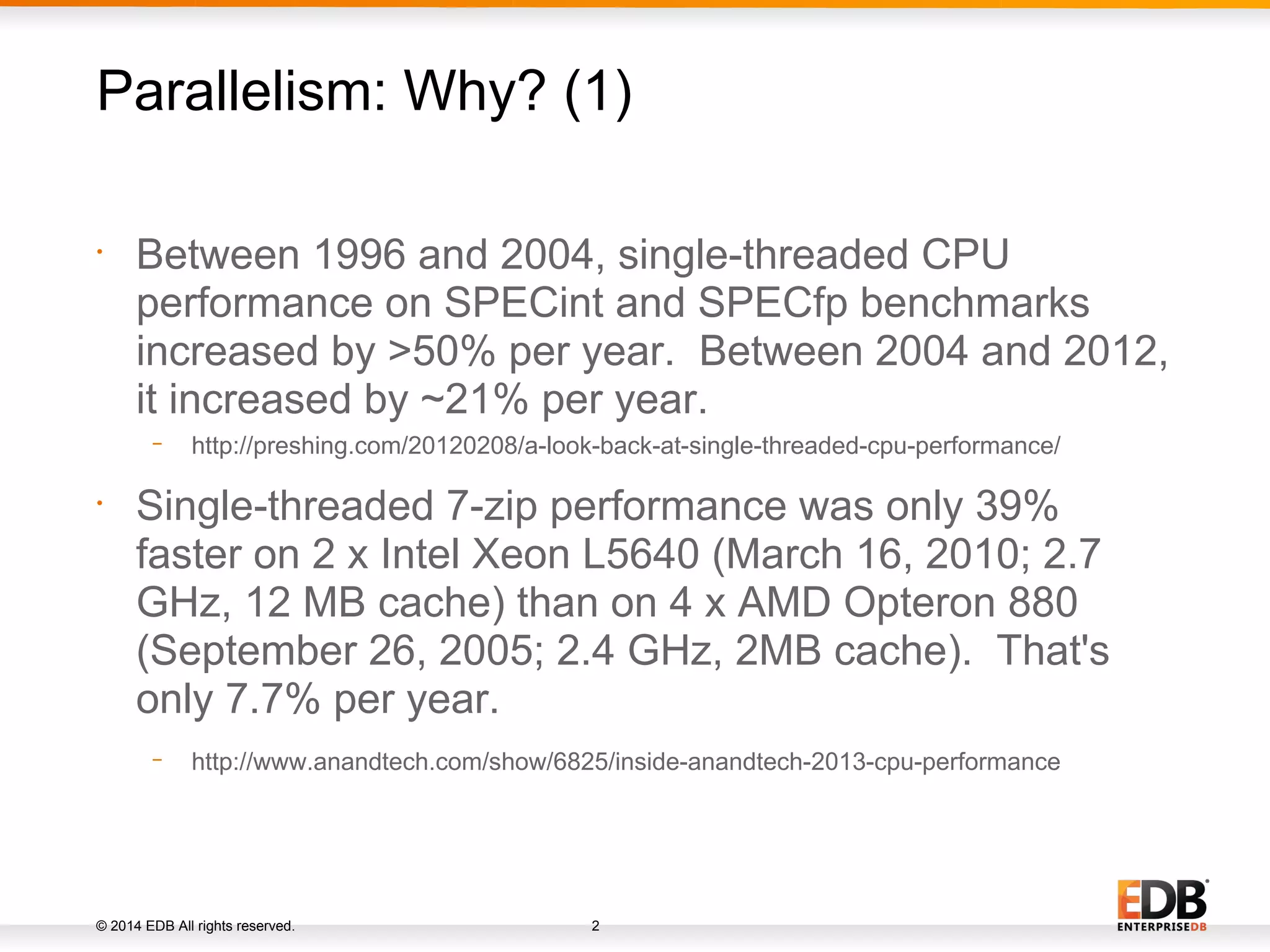
![© 2014 EDB All rights reserved. 3 • Dell Configuration Tool (as of 2014-05-15): − 2x Intel® Xeon® E7-4890 v2 Processor 2.8GHz, 37.5M Cache, 8.0 GT/s QPI, Turbo, 15 Core, 155W [add $7,735.68] − 2x Intel® Xeon® E7-8893 v2 Processor 3.4GHz, 37.5M Cache, 8.0 GT/s QPI, Turbo, 6 Core, 155W [add $8,410.30] Parallelism: Why? (2)](https://image.slidesharecdn.com/implementingparallelisminpostgresql-140529204803-phpapp02/75/Implementing-Parallelism-in-PostgreSQL-PGCon-2014-3-2048.jpg)
